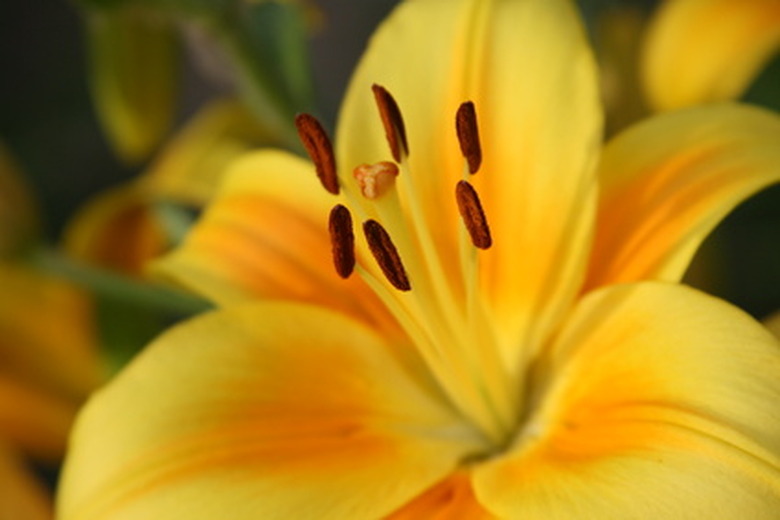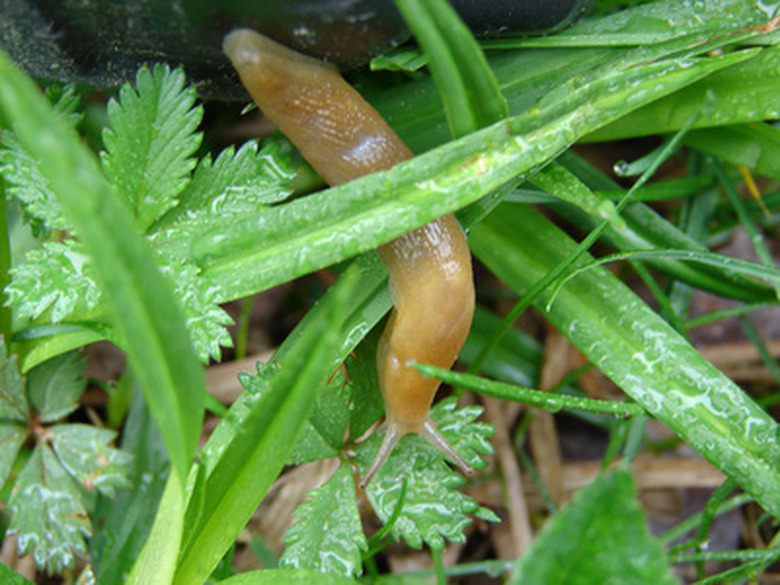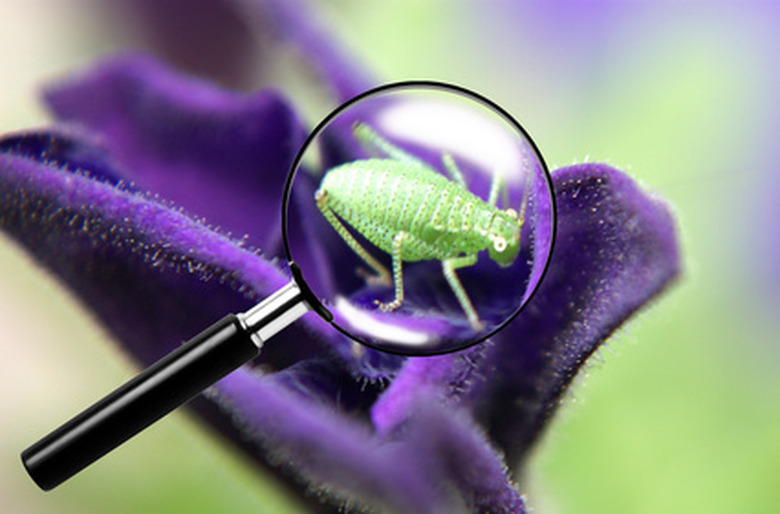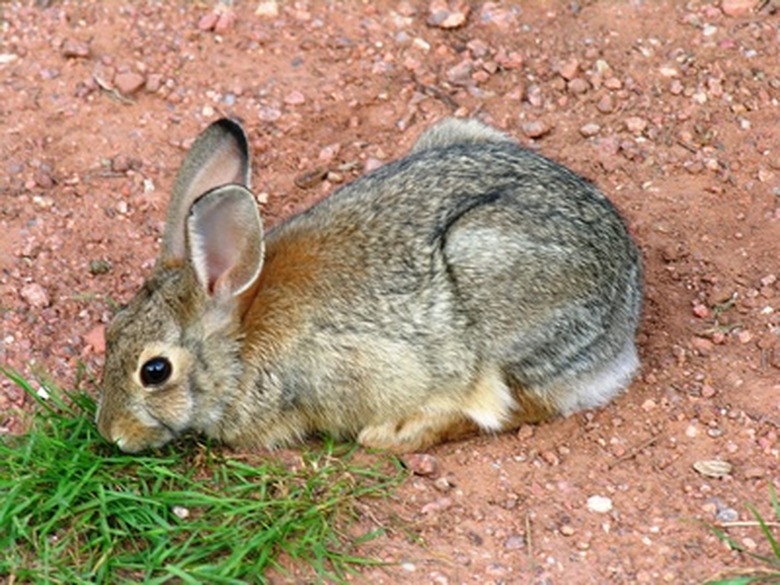Asiatic Lily Insects And Pests
Asiatic lilies make an impressive statement in a flower bed and are easy to grow. Available in a range of colors, their strong stalks need no staking and they need little care as long as they are in soil with good drainage and receive at least eight hours of sunlight per day.
Once planted, lilies take care of themselves, but they can't take care of the pests that can attack them; that's where the gardener comes in.
Lily Beetles
The biggest pest for Asiatic lilies is the lily beetle and its offspring. Lily beetles are slightly longer than a ladybug and have a bright red-orange shell. While the lily beetle will be happy to munch on the leaves of a lily, the real danger is the offspring. The tiny slug-like creature covers itself in its excrement for protection, and hides on the underside of the leaves, which it must eat for nutrients.
- Asiatic lilies make an impressive statement in a flower bed and are easy to grow.
- The tiny slug-like creature covers itself in its excrement for protection, and hides on the underside of the leaves, which it must eat for nutrients.
The most effective weapon in killing the lily beetles and its hungry offspring is Pyrethrum spray, which is an organic pesticide made from the pyrethrum flower. Spray the entire plant, paying particular attention to the underside of the leaves as soon as you spot lily beetles, and again in two weeks. Check the plants periodically after the second spraying in case another hatch has occurred.
Slugs and Snails
Slugs and snails are a big problem in damp environments and are masters at hiding from the gardener. Both have a natural aversion to bright sun because they dry out, so they hide wherever they can find deep shade, such as under large leaves, dense plants, fallen tree branches or rocks. The gardener may not notice them until a rainy day when they feel safe enough to come out to devour plants and flowers.
The best time to find them in after the sun has gone down or on a warm, humid evening.
- The most effective weapon in killing the lily beetles and its hungry offspring is Pyrethrum spray, which is an organic pesticide made from the pyrethrum flower.
- The gardener may not notice them until a rainy day when they feel safe enough to come out to devour plants and flowers.
One way of getting rid of slugs and snails is to hand-pick them from your garden and put them in a plastic bag for disposal, or place them in a pan of soapy water, which kills them. An effective spray is household ammonia in water mixed to 5 percent to 10 percent dilution. Common table salt kills them, but also kills the grass.
Pour one inch of beer into small pie plates and set them around slug-infested areas to attract slugs and snails who so love beer that they will drink and drink until they fall in and drown.
Slugs and snails won't crawl across things that are coarse and sharp, such as crushed egg shells, salt, wood ashes, lime or diatomaceous earth. If a particular lily plant seems irresistible to these pests, place a circle of one of these around the base of the plant to deter them.
Aphids
These tiny insects can have a huge impact on a growing lily as well as many other plants it finds attractive in your garden. Aphids are typically seen in great numbers under the leaves or just below the blossom. They are less than an eighth of an inch long, are pear shaped and appear translucent. They attack lilies and other plants by sucking out the juices; what it can't digest it excretes as "honeydew," which can cause mold problems on anything it comes in contact with. Ants will protect aphids in order to keep them producing the honeydew, which ants feed on.
- One way of getting rid of slugs and snails is to hand-pick them from your garden and put them in a plastic bag for disposal, or place them in a pan of soapy water, which kills them.
- They attack lilies and other plants by sucking out the juices; what it can't digest it excretes as "honeydew," which can cause mold problems on anything it comes in contact with.
The most organic way to dislodge aphids from lilies is to spray them with the most powerful setting on your watering hose. They do not seem to be able to get back, since they were deposited originally by a parent. Doing this does not harm the plant or beneficial insects that may be working their way through your aphid's population. These beneficial insects include a certain type of wasp, ladybeetles and the larvae of the lacewing.
Spraying them with pyrethrum or insecticidal soaps works well, but may harm beneficial insects.
A last option would be to remove the affected part of the plant and destroy it.
Rabbits
Rabbits present a special problem for those gardeners in areas where rabbit populations are high. Rabbits commonly breed at six months old and can have as many as four litters of six per year. That's a lot of mouths to feed, and virtually everything in your yard is potential food. While no method is perfect, here are some tips for sending them to eat elsewhere.
- The most organic way to dislodge aphids from lilies is to spray them with the most powerful setting on your watering hose.
The most effective guard against rabbits is a fence at least 2 feet high, but this may not be a feasible choice for everyone. Dogs will typically give chase to a rabbit, but the rabbit will return as soon as the dog is not in sight if it has found something delectable to eat. Placing live traps in areas that rabbits have favored allows the gardener to take the offending critter miles away without harming the rabbit. Sprays made from garlic or capsaicin make your lilies taste unappealing, but has to be reapplied often, especially after it rains.
Fungi
When water is allowed to sit on the leaves, it encourages molds and mildew to grow. If it is not possible to use a soaker hose to water your lilies, water them during the day. This allows any water to evaporate and keep leaf and flower surfaces dry.
- The most effective guard against rabbits is a fence at least 2 feet high, but this may not be a feasible choice for everyone.
- If it is not possible to use a soaker hose to water your lilies, water them during the day.




